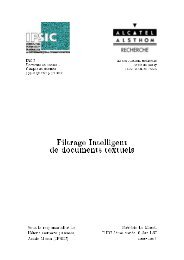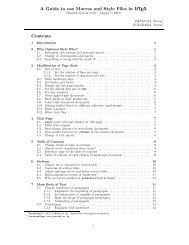Single-Chip Low Cost Low Power RF-Transceiver (Rev. A)
Single-Chip Low Cost Low Power RF-Transceiver (Rev. A)
Single-Chip Low Cost Low Power RF-Transceiver (Rev. A)
You also want an ePaper? Increase the reach of your titles
YUMPU automatically turns print PDFs into web optimized ePapers that Google loves.
CC2500If the XOSC is forced on, the crystal willalways stay on even in the SLEEP state.Crystal oscillator start-up time depends oncrystal ESR and load capacitances. Theelectrical specification for the crystal oscillatorcan be found in Section 4.4 on page 10.19.3 Voltage Regulator ControlThe voltage regulator to the digital core iscontrolled by the radio controller. When thechip enters the SLEEP state, which is the statewith the lowest current consumption, thevoltage regulator is disabled. This occurs afterCSn is released when a SPWD commandstrobe has been sent on the SPI interface. Thechip is now in the SLEEP state. Setting CSnlow again will turn on the regulator and crystaloscillator and make the chip enter the IDLEstate.When wake on radio is enabled, the WORmodule will control the voltage regulator asdescribed in Section 19.5.19.4 Active ModesCC2500 has two active modes: receive andtransmit. These modes are activated directlyby the MCU by using the SRX and STXcommand strobes, or automatically by Wakeon Radio.The frequency synthesizer must be calibratedregularly. CC2500 has one manual calibrationoption (using the SCAL strobe), and threeautomatic calibration options, controlled by theMCSM0.FS_AUTOCAL setting:• Calibrate when going from IDLE toeither RX or TX (or FSTXON)• Calibrate when going from either RXor TX to IDLE• Calibrate every fourth time when goingfrom either RX or TX to IDLEThe calibration takes a constant number ofXOSC cycles (see Table 28 for timing details).When RX is activated, the chip will remain inreceive mode until a packet is successfullyreceived or the RX termination timer expires(see Section 19.7). Note: the probability that afalse sync word is detected can be reduced byusing PQT, CS, maximum sync word lengthand sync word qualifier mode as describe inSection 17. After a packet is successfullyreceived the radio controller will then go to thestate indicated by the MCSM1.RXOFF_MODEsetting. The possible destinations are:• IDLE• FSTXON: Frequency synthesizer onand ready at the TX frequency.Activate TX with STX.• TX: Start sending preambles• RX: Start search for a new packetSimilarly, when TX is active the chip willremain in the TX state until the current packethas been successfully transmitted. Then thestate will change as indicated by theMCSM1.TXOFF_MODE setting. The possibledestinations are the same as for RX.The MCU can manually change the state fromRX to TX and vice versa by using thecommand strobes. If the radio controller iscurrently in transmit and the SRX strobe isused, the current transmission will be endedand the transition to RX will be done.If the radio controller is in RX when the STX orSFSTXON command strobes are used, the “TXif clear channel” function will be used. If thechannel is not clear, the chip will remain in RX.The MCSM1.CCA_MODE setting controls theconditions for clear channel assessment. SeeSection 17.5 on page 33 for details.The SIDLE command strobe can always beused to force the radio controller to go to theIDLE state.19.5 Wake On Radio (WOR)The optional Wake on Radio (WOR)functionality enables CC2500 to periodicallywake up from deep sleep and listen forincoming packets without MCU interaction.When WOR is enabled, the CC2500 will go tothe SLEEP state when CSn is released afterthe SWOR command strobe has been sent onthe SPI interface. The RC oscillator must beenabled before the WOR strobe can be used,as it is the clock source for the WOR timer.The on-chip timer will set CC2500 into the IDLEstate and then the RX state. After aprogrammable time in RX, the chip goes backto the SLEEP state, unless a packet isreceived. See Figure 18 and Section 19.7 fordetails on how the timeout works.PRELIMINARY Data Sheet (<strong>Rev</strong>.1.2) SWRS040A Page 37 of 83



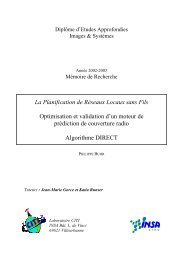
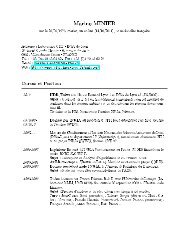

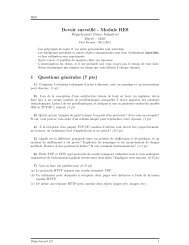

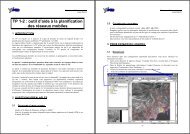
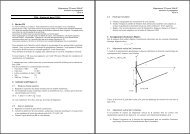
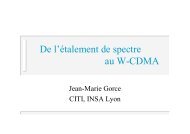
![td-res-4 [Compatibility Mode]](https://img.yumpu.com/45826987/1/184x260/td-res-4-compatibility-mode.jpg?quality=85)
